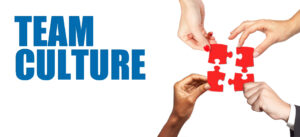Team culture is not a static blueprint—it’s a living, evolving process shaped by every interaction. In today’s globalized workforce, culturally diverse teams are the norm, yet many organizations struggle to harness their full potential. Research by McKinsey reveals that ethnically diverse teams outperform homogeneous ones by 36% in profitability, but only 40% of employees feel their organization supports cross-cultural collaboration effectively.
This article explores how team culture emerges in multicultural settings, debunks outdated cultural models, and provides actionable strategies to foster environments where diversity drives innovation.
Beyond National Stereotypes: Rethinking Cultural Frameworks
The Limitations of Traditional Models
For decades, frameworks like Geert Hofstede’s cultural dimensions or Fons Trompenaars’ dilemma theory dominated corporate training. These models categorize national cultures into binaries (e.g., individualistic vs. collectivistic), but they fail to account for:
- Intersectionality: An Indian female engineer in Germany may align more with her tech industry norms than broader “Indian” cultural traits.
- Hybrid Identities: 67% of Gen Z professionals identify with multiple cultural influences, according to a 2023 Deloitte report.
- Contextual Fluidity: A team negotiating a project deadline in New York will behave differently than the same team at a brainstorming retreat in Bali.
Cultural Complexity in Practice: A Case Study
Consider Team Nexus, a globally distributed product team:
- Aisha (Dubai): Raised in a hierarchical corporate culture but advocates for agile methodologies.
- Lars (Stockholm): Prefers consensus-driven decisions but adapts to rapid pivots under pressure.
- Priya (Bangalore): Blends Indian jugaad (frugal innovation) with Silicon Valley scalability.
Their secret? They co-created a “micro-culture” prioritizing:
- Transparent Conflict Protocols: Weekly “reset” meetings to address tensions.
- Flexible Communication: Async updates via Slack, deep-dives on Zoom.
- Celebration of Hybrid Rituals: Combining Diwali light ceremonies with Swedish fika breaks.

The 4-Stage Process of Team Culture Formation
Based on Mary Yoko Brannen’s research and modern case studies, team culture evolves through:
1. Mapping Cultural Capital
- Action: Audit team members’ cultural assets (e.g., language skills, negotiation styles).
- Tool: Use the Cultural Orientations Framework to identify hidden strengths.
2. Bridging Differences
- Example: At Siemens Energy, mixed teams use “culture brokers”—bilingual members who explain unspoken norms.
- Data: Teams with designated brokers report 28% fewer misunderstandings (Harvard Business Review, 2022).
3. Integrating Practices
- Strategy: Develop team-specific glossaries (e.g., “Urgent” means <24 hours in Berlin but ≤3 days in Madrid).
- Case Study: Airbnb’s “Belong Anywhere” teams use culture wikis to document decision-making rituals.
4. Iterating Through Feedback
- Tactic: Quarterly “culture retrospectives” to prune ineffective norms.
- Stat: Teams that iterate cultural practices boost retention by 41% (Gallup, 2023).
Challenges & Solutions for Modern Teams
Remote/Hybrid Dynamics
- Issue: 52% of remote multicultural teams struggle with trust-building (Buffer State of Remote Work, 2024).
- Fix: Implement virtual “cultural immersion” sessions where members share:
- Personal Histories: E.g., How their upbringing shapes work ethics.
- Time Zone Rituals: “No-meeting Wednesdays” for deep work across regions.
Overcoming Unconscious Bias
- Tool: Platforms like Gloat use AI to highlight bias in task assignments.
- Framework: Apply Amy Edmondson’s Psychological Safety model with culture-specific tweaks:
- In reserved cultures, use anonymous polls for feedback.
In expressive cultures, host debate-style brainstorming.
- In reserved cultures, use anonymous polls for feedback.

Actionable Strategies for Leaders
- Hire for Cultural Add, Not Fit
- Red Bull’s innovation teams prioritize candidates who challenge existing norms.
- Leverage “Third Cultures”
- Nike’s EMEA teams blend Dutch directness with Middle Eastern relationship-building into a “straight-talk-with-respect” hybrid.
- Measure Cultural Health
- Metrics:
- Cross-Cultural Mentorship Rates
- Idea Origination Diversity (Track which cultures inspire initiatives).
- Metrics:
Key Takeaways
- 🔄 Team culture is co-created, not dictated.
- 🌍 Move beyond nationality—focus on intersectional identities.
- 🛠️ Tools matter: Use AI and cultural audits to map dynamics.
- 🔥 Iterate rituals: Kill practices that exclude 20%+ of the team.
FAQs
Q: How long does team culture formation take in diverse groups?
A: 3-9 months, with checkpoints at 30/60/90 days to adjust norms.
Q: Can AI replace human cultural brokers?
A: No—but tools can flag potential clashes pre-meeting.
References
- Brannen, M.Y. (2020). Cross-Cultural Management & Cultural Identity. SAGE Handbook.
- Edmondson, A. (2023). Right Kind of Wrong: The Science of Failing Well.
- McKinsey & Company. (2023). Diversity Wins: How Inclusion Matters.
- Gloat. (2024). AI-Driven Talent Mobility.
“Has your team developed a unique cultural practice? Share your story below—we might feature it in our next case study! 🌐 #TeamCultureMatters”










